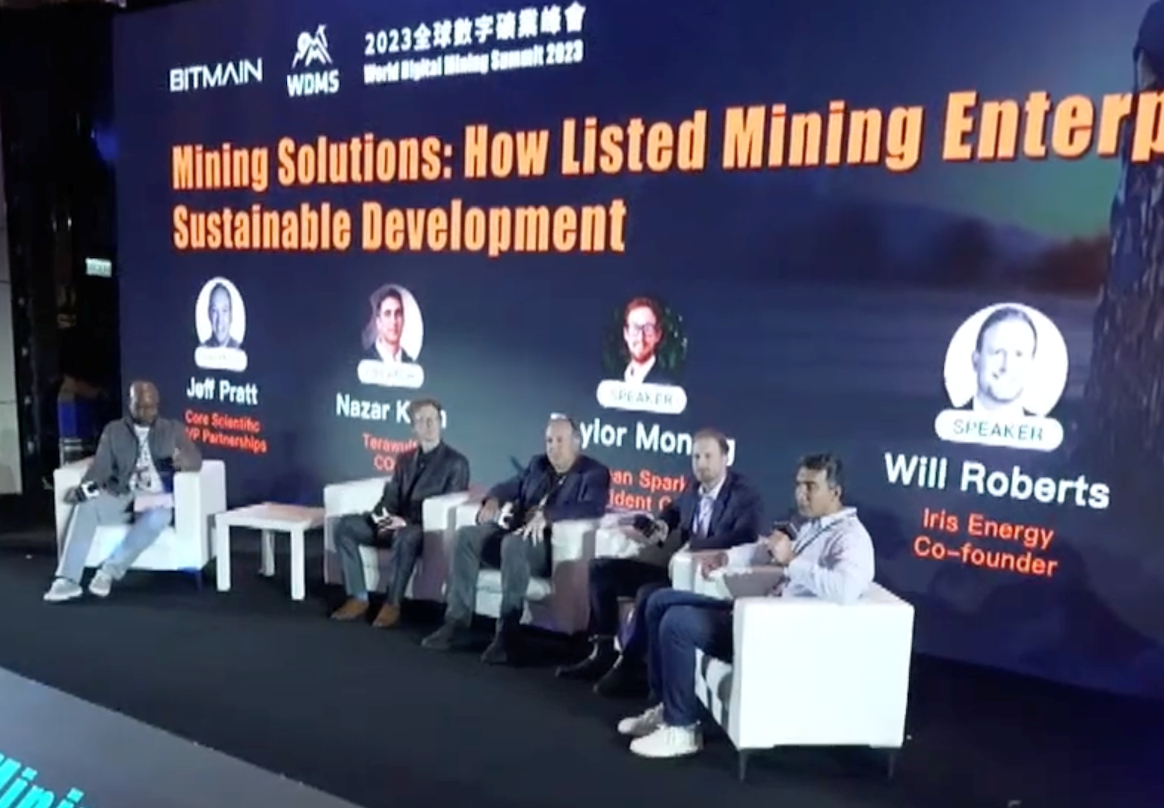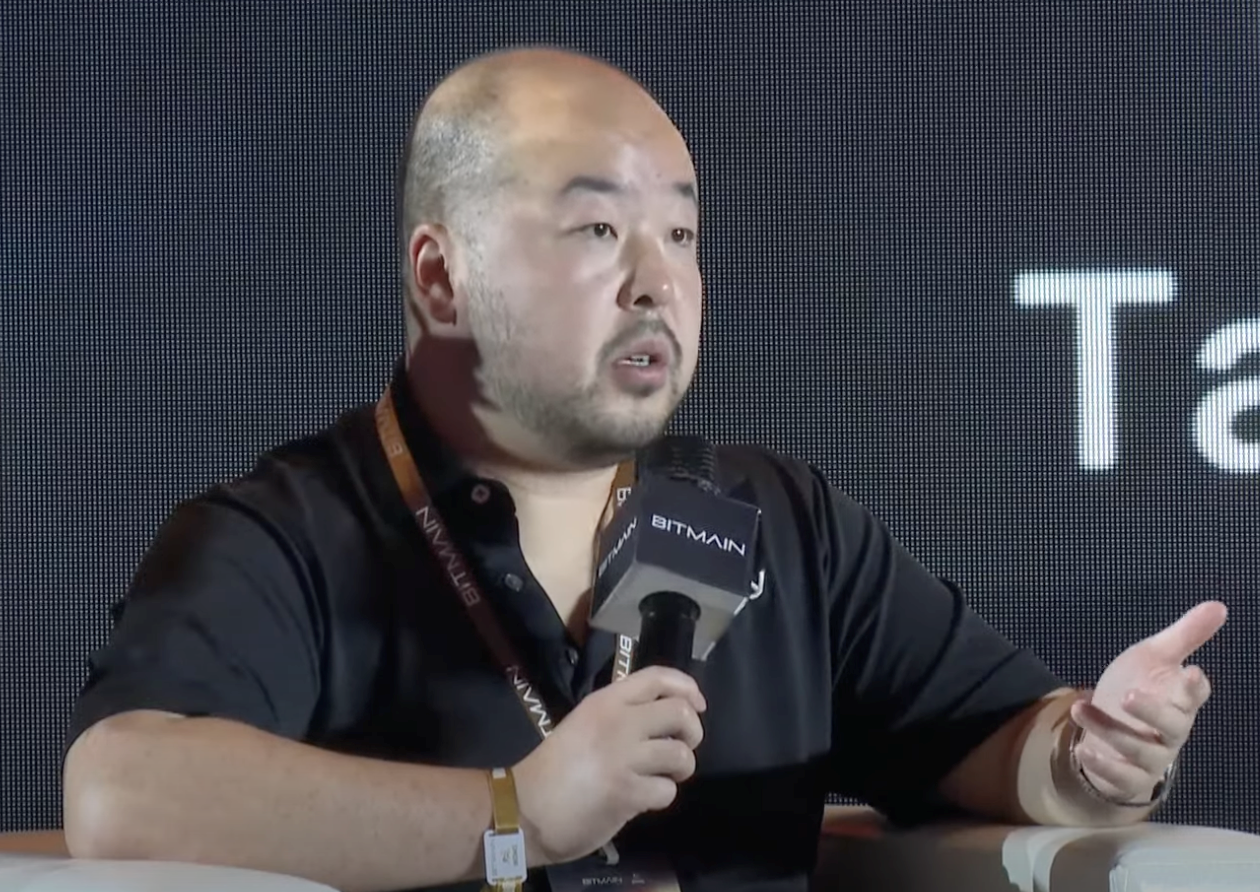
Anonymous influential analysts, traders, and Bitcoin experts on X (formerly known as Twitter) often analyze what Bitcoin miners do with their block rewards as a psychological gauge of Bitcoin’s price performance. Where can it go?
In theory, Bitcoin miners sending rewards to exchanges heralds selling pressure on asset prices and could reflect the difficulty of miners.
Several publicly listed Bitcoin miners challenged aspects of this method at last week’s Bitmain World Digital Mining Summit (WDMS) in Hong Kong at a panel hosted by Ray Salmond .

Bitmain’s WDMS on Bitcoin mining and renewable energy
According to Jeff Taylor, vice president of data center operations at Core Scientific:
“Core Scientific can be a model for a hodl strategy. We built a hoard of 10,000 Bitcoin and got it to the top, then that led to some financial struggles that we’re trying to overcome from now on. So what we are doing today is we are selling our Bitcoin yield every day.”
“I think it comes back to three things: How and where can you reduce costs, where and how can you increase efficiency, and what new financial innovations can you bring to the warehouse your money or energy programs essentially to stabilize your company’s overall profitability.
Panelists Taylor Monnig of CleanSpark and Will Roberts of Iris Energy agreed with Jeff Taylor, mentioning their respective companies also sold the majority of the BTC they mined.
“CleanSpark’s strategy is very different, right? So we’re very cautious in the bull market and we’re sad about that,” Monnig said. “We sold Bitcoin at the highest price of $60,000 and we feel sorry for that too. However, I think everyone has seen our strategy pay off this year with the expansion we achieved to 9.5 exahash and now we are starting to increase our holdings . As you may have seen over the past few months Bitcoin prices are at much lower levels.”
“We have taken a much more conservative approach in the bull market. Building in the midst of a bear market is our company’s motto, and I think we’ll continue to expand on that motto. I think people learned a lot during the last market cycle, and I think the CleanSpark strategy will be adopted by many other miners in the future.”
Roberts shares:
“We have sold out of Bitcoin every day since we started mining. I mean our view is that mining Bitcoin and operating data centers is a very different business model than investing in an asset like Bitcoin. We are in the business of creating shareholder value. What we are good at is operating data centers, generating cash flow for investors.”
“Our view is that we can actually create more value by selling Bitcoin today and making that Bitcoin, plus some money in the future, and we have the opportunity and the ability expand to do that or at some stage in the future potentially pay a dividend, whether that’s cash or Bitcoin.”
TeraWulf co-founder, Nazar Khan, commented:
“The last bull market seems two lifetimes away. So I think any approach that we had then is gone and we’ve adapted and modified our current position somewhat.”
“Similar to some of the others here, we sold every Bitcoin we produced and basically, at TeraWulf, we thought we were a convert. We’re using a kilowatt hour of energy to run through the amazing ASICs that Bitmain makes and generate the hash on the back end. Every day, the way we measure this is how effective we are in that transformation. We tell investors that we are converters and measure how effective we are in that transition, and that means we make money on every Bitcoin we sell day”.
So, are Bitcoin analysts doing it all wrong?When asked about the accuracy and methodology of on-chain metrics like Charles Edward’s hash range indicator, Khan quipped:
“I think being an analyst is an extremely difficult job because by definition you are probably wrong. Besides, I think historically it’s probably been a good measure. Historically, when we realized margins above 80% there was no need to sell. You don’t need to monetize every Bitcoin produced.”
“I think when we look at most companies today, based on the growth plans that we have, the only source of income that we have is the margin that we get by mining Bitcoin or Capital raising has increased and the capital markets we use to grow our business have been difficult over the past few years,” Khan added.
“Therefore, I think, at least for publicly listed miners, looking at their Bitcoin selling strategy is not necessarily a direct indicator of capitulation or difficulty that is relevant with their current position and where their growth plans are tomorrow and how to meet their capital needs.”
Foundry vice president Kevin Zhong’s statement is also in line with the views of publicly listed miners at WDMS.

Foundry Senior Vice President Kevin Zhang talks about Bitcoin halving
“The ideal scenario is to rely on our hope that Bitcoin will go up in price and our woes will go away on its own, that is not guaranteed. Bitcoin-only economic drivers may not be there or may come 6 months or 12 months after halving. In that scenario, you have to be really creative. What do we do with block space, how do we increase fees. Are there other ways to subsidize ourselves and subsidize the miners? You also have to be very critical and strategic with what you do with the Bitcoin you mine. Are you hedging, are you taking covered calls? What is your budget plan? If you have a bullish view on Bitcoin, will you liquidate all of it or keep some of it. It requires a lot of layering and modeling, countless models.”
Source:
https://tradecoind2.com/3-reasons-bitcoin-miners-sell-btc-and-why-its-not-a-surrender/ .
.  .
.  .
.  .
.  .
.  .
.  .
.  Shop
Shop
